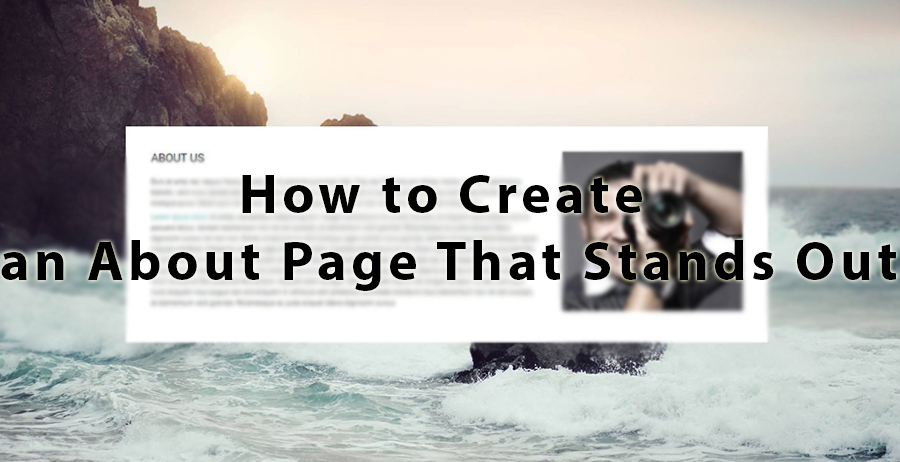How to Create an About Page That Stands Out
Every site should have an “About” page that highlights some of the key team members who make the brand what it is. Why? Because this information could be pivotal in helping a customer make a final purchasing decision.

According to Harvard Business School Professor Emeritus James L. Heskett, corporate culture can account for a difference of between 20 and 30 percent between a company and its less culturally relevant competitors. Part of this is due to the morale and productivity of its workers, but another part is due to customers spending more on a brand whose values and vision they agree with (or appreciate).
So how can you demonstrate your brand’s culture on your About page? How can you increase the number of conversions your About page receives?
Making Your About Page Stand Out
There are a handful of general tactics you can use to make your About page more effective:
- Explain your passion. You started this business because you were passionate about something—probably something related to the products and services you now sell. Use your About page to explain how you got into this business, what makes you passionate about it, and how that passion has changed. For example, you might tell an anecdote about a childhood dream or describe a handful of people you met who pointed you in this direction. Take a look at Tyme’s About page as an example, where the founders explain their desire to create a better styling iron.
- Write in your brand voice. You’ll also need to make an effort to write in your signature “brand voice,” rather than trying to adopt some colorless corporate style. Your brand voice should depend on your target audience, so think carefully about your vocabulary and your inflection. For example, is your brand voice simple and down-to-earth, or is it more flowery and artistic? Is it formal and perfectly structured, or is it more loose and casual? Take a look at Cultivated Wit’s About page as an example; it makes great use of subtle, somewhat dry humor to make its content stand out and reflect the nature of the brand.
- Show images of the team. Next, show some images of the team—even if your customers won’t be working with these people directly. This shows the human side of your brand, proving that there are real people behind the scenes making your brand what it is. This human connection makes people feel closer to your brand, and may influence them to reach out to you directly. A good example here is Eight Hour Day’s About page, which features a prominent image of its two founders immediately as the header.
- Include team member bios. Next, include some biographical information for your team members. Does your accountant have a master’s degree and like to fish on the weekends? Does your head of sales have a decade of experience, and two small kids at home? These biographies help you show off the diverse team you have, including your wide range of skills and the personalities that make your company what it is. Even a couple of sentences about each of your main team members is enough to win people over.
- Say something different. Finally, try to say something or do something different than what your competitors are doing. There are millions of companies with About pages out there, so what’s going to make yours stand out? Without something to differentiate your brand, customers won’t have a reason to remember you, and certainly won’t have a reason to reach out to you. For example, Sub Rosa uses a unique spin on the conventional “team bio” pages; instead of writing a paragraph about each team member, they have a photograph of objects that best represent their personalities.
The Call to Action
One last piece of advice—make sure your About page has some kind of call to action. This could be an invitation to contact your company for a quote or more information, or a link to buy one of your signature products. It’s good to let your customers know what your brand is (and who works for the company), but the end goal is to get that knowledge to result in some measurable action. Without a path to revenue, your About page is a superficial inclusion, so make sure you can calculate its standalone ROI.
